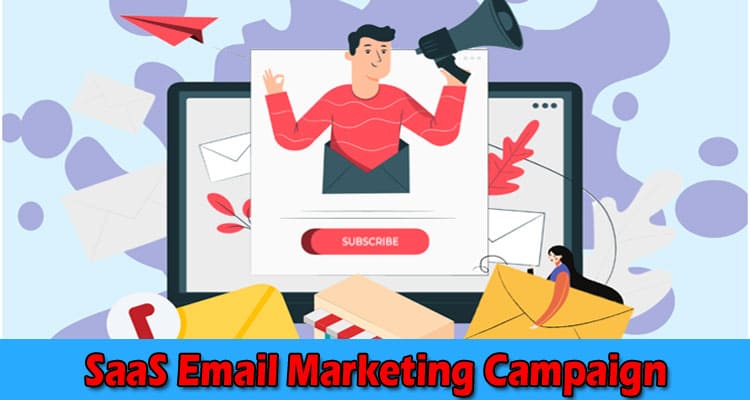Email is still crucial to the growth of Software as a Service (SaaS) brands, just as it is in any other industry. SaaS models require marketers to have extensive expertise in the strategies they employ.
When done perfectly the first time, SaaS email marketing has the potential to boost engagement, conversion rates, and client loyalty. To stay at the top of your subscribers’ inbox priority lists, you’ll need to be creative with the messages you send and the means by which you deliver them.
SaaS marketing is challenging because there are no physical goods to advertise to buyers. But it can still be done! If you want to level up your email marketing game, this article will provide you with some strategies on how to achieve your goal.
Table of Contents
Define Your Objectives
To successfully attract new paying clients with an automated email sequence, you must first define the objectives of your email marketing campaign. Email campaign sequences, messages, tools, key performance indicators, and target demographics are all determined by your objective.
Brand recognition, trial signups, sales, customer education, retention, and revenue growth (through upselling and/or cross-selling) are all possible outcomes of an email marketing campaign.
Once you know what you want to achieve, you can design an effective email marketing strategy that speaks to both current and potential customers. If you understand “the why,” you’ll have a much easier time figuring out “the how” to achieve your goal. Learn more here.
Develop a Plan for Generating New Leads
SaaS companies can expand their customer base by tapping into any number of available lead-generating methods. You can get leads for your SaaS business by blogging, social media, webinars, PPC ads, gated content, and more.
Who you’re trying to reach will determine which lead generation channel is most effective. When trying to generate leads, it’s better to use a combination of methods rather than depending on just one.
The end result is the same regardless of the method used to generate leads. The end goal is to build a list of people who are interested in your brand enough to sign up for your mailing list—these people are called marketing-qualified leads (MQLs).
These MQLs can be further developed into SQLs, and from there into paying customers.
Divide Your Target Audience
It’s quite impossible that a single email campaign will be able to satisfy the needs of your whole readership.
No matter what method you employ to divide up your leads, you should always end up with detailed user personas for each subset. These will stand in for the groups you’ve separated people into, making it simpler to tailor email campaigns to individual interests.
Personalize Your Emails
Adding a user’s name or other identifying information to an email is a simple way to make it more relevant and useful to the recipient. It’s possible to get away with sending the same welcome email to numerous user groups, but this generic strategy will lose efficacy over time.
You should make an effort to send personalized emails that take into account existing user behavior and are tailored to the unique aims of that segment. This could involve demonstrating useful marketing automation or even exposing them to stuff that is pertinent to their use case.
It’s vital to keep in mind that personalization isn’t limited to the specifics of the content of your promotional emails; it also applies to the larger flows and sequences you design. A good example of a scenario where drip campaigns may be useful is if your product offered a free trial.
These sequences could instruct users on how to maximize their trial period and showcase your product’s most compelling features. The free trial conversion rate can be improved with these preliminary customer success activities. Check out this page.
Automate Your Marketing Efforts
Another thing we want you to know, folks, is that email marketing strategies for SaaS should definitely include autoresponders. These are the timed, repetitive emails that make up a “drip campaign” that you send to a subset of your subscribers.
These emails are low-key convenient because they require no ongoing attention when they are initially set up. Then, a timely notification will be sent to the customer immediately following their action.
If a customer abandons their cart, for instance, you could send them a reminder to come back and finish their purchase. When someone joins your email list in order to get your newsletters, you should send them a welcome message automatically. Add a short introduction to your SaaS business and a heartfelt “thank you” email.
Get the Subject Line Just Right
You should also know that the first thing that recipients of your email will see is the subject line, so it’s no surprise that it makes a big impression. Given that, it’s important to tailor the subject line to the recipient and keep it brief in order to stand out.
Most studies have found that subject lines between six and ten words in length perform best in terms of open rates. Instead of utilizing jargon that your audience might not understand, focus on using powerful phrases and clearer language.
While it is unwise to get too technical in an email subject line, it is also possible to do more harm than good by being too vague. Finding the sweet spot where the user’s attention is captured without being overwhelmed is essential.
Think About the Time Aspects
Emailing your subscribers whenever you make a new blog post or release a new feature could seem like a helpful thing to do. However, in order to maximize your click-through rate, you should determine the optimal time to send your email.
The best time to send an email, for instance, can be determined by analyzing how active the subscribers have been in the past. Then, use analytics to determine when your emails are most likely to be opened and clicked. Doing so will guarantee that the content of your emails is appropriate for the intended recipient(s).
Think about how often you send out emails, too. You need to find the sweet spot between sending enough emails to keep your subscribers engaged and not sending so few that they forget about you.
The Usage of Branding
Different people in your SAAS company’s organization interact with customers at various points in the buying process. That’s why if you want your SaaS brand to be taken seriously, you need to employ the greatest branding methods in the industry. Maintaining a constant voice for your SaaS brand is what we mean when we talk about branding.
If you decide to go with a more conventional tone, for instance, make sure that everyone in your organization speaks to your SaaS customers in the same way. This ensures that your brand’s tone is maintained regardless of who is responsible for sending emails to customers. Maintain a consistent email signature for all communications with customers.
Use Testimonials
Promoting your SaaS company through feedback from satisfied clients is a proven method of success. Customers are more likely to try your SaaS product after hearing about positive customer experiences.
Reviews and testimonials from satisfied clients are music to every business owner’s ears. People who have never used your services before may be persuaded to do give them a try after reading the testimonials!



